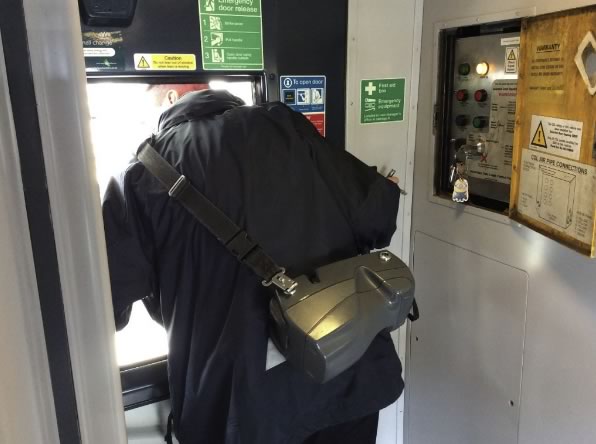One data collection methodology that I sometimes use is the observational method called ‘shadowing’, when a trained researcher investigates, unobtrusively, the activities that individuals perform as they go about their business. Shadowing involves a field visit, which gives the opportunity to observe and meet people where they are comfortable, at their habitual places of work. It can lead to specifications of concrete details about work activities, and this knowledge can help write requirements to be implemented in subsequent development phases.
During the shadowing activity, participants are aware of the presence of the researcher, but are asked to perform the duties as naturally as possible. This is arranged in advance to guarantee safety of the activities and reliability of the data collection.

When shadowing train crew, I recruited them at terminus stations and boarded the corresponding train services. After introducing myself and explaining details of the process, I obtained signed consent and started collecting data. I boarded regular intercity trains in the South and West England and Wales and followed the train manager on their assigned journey.
I registered all major tasks performed by crew during a train journey to obtain as much information about as many activities as possible in this scenario to provide a simplified hierarchical task analysis, customary in ergonomics research. A log sheet contained the time of occurrence (registered as hour:minute at the beginning of the activity), what crew were doing, and where it took place. Whenever possible, additional information was registered such as how and why the activities were performed. I also took pictures of specific aspects of the work and journey.

At the end of the shadowing process, participants were asked a few questions to clarify some issues observed. This debriefing session was designed so crew could describe these issues, illustrate their frequency, and explain their impact on work and on how they feel. By revisiting the activities performed, participants were able to add meaning to them and enrich the hierarchical task analysis. I also presented a list of technological innovations to obtain crew’s impressions and opinions.
The shadowing study was performed in six days of fieldwork, with a total of 30 hours and 8 minutes on board trains. It resulted in an average observation of 2 hours per crewmember. Approximately 4 hours were used for the debriefing sessions, resulting in almost 26 hours of shadowing. Log sheets containing 562 observations were transcribed to MS Excel where the numeric data was subject to quantitative analysis using pivot tables.


